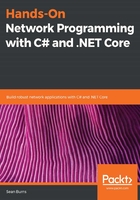
DNS – the modern phone book
As I have alluded to, engineers designing modern computer networks faced the same problem as telecom engineers: defining a standardized syntax with which they could create unique addresses for each device on their network. Thankfully, though, there were already giants on whose shoulders those computer network engineers could stand (to paraphrase Sir Isaac Newton).
The phone numbering system demonstrated that a simple system of fixed-length numeric addresses could be quickly parsed and routed. Moreover, strictly numerical addresses can be represented in binary. This meant no additional standards needed to be applied for consistently representing non-numeric characters. However, this was a trade-off in usability. The software written to use those addresses would still need to be written by humans. As is often the case, the easier (and more performant) solution for computers to use was the more difficult solution for humans. This meant that computer network engineers would need to devise a phone book of their own. Thankfully, they rose to the occasion.
On all modern computational networks, the fixed-length numerical address by which you can reliably locate an external device is the Internet Protocol (IP) address. Meanwhile, the system from which you can reliably ask for the address of a given device is the Domain Name System (DNS). This, the DNS, is the computer network's phone book. It's essentially an elaborate, distributed mapping of human-readable domain names to their underlying IP addresses.
Every device on the internet (or any local networks) will have their own IP address. However, the specifics of how that IP address is determined, and the strengths and limitations of the syntax for those addresses, will be discussed later in this book. For now, what we're concerned with is specifically how those addresses are resolved by their more meaningful, human-readable domain names. In this next section, we'll explore fully how that happens every time you look up a resource by its URL.